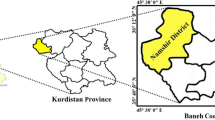Abstract
There has been much emphasis placed on the economic contribution that non-timber forest products (NTFP) can make to rural livelihoods of people living in or near forests. In this study we focus on the benefits of greenery obtained from two tree species, romerillo (Lomatia ferruginea (Cav.) R. Br.) and avellano (Gevuina avellana Mol.), collected by indigenous women in southern Chile. Trees producing commercial-quality leaves grew in secondary forests dominated by species usually abundant in ecological formations that follow forest degradation. Natural availability of greenery was relatively low (658 and 38 commercial leaves per hectare for romerillo and avellano, respectively) which added to restrictive market conditions resulted in modest financial returns and a contribution to household income of less than 1%. Our results confirm that trade on NTFP does not always lead to significant income generation. Yet, the information provided, represents a basis to explore management alternatives, such as agroforestry schemes, which can potentially expand greenery yield and economic returns.


Similar content being viewed by others
References
Arnold JEM, Ruiz-Pérez M (2001) Can non-timber forest products match tropical forest conservation and development objectives? Ecol Econ 39:437–447
Cocksedge W, Titus B (2006) Short-term response of salal (Gaultheria shallon Pursh) to commercial harvesting for floral greenery. Agroforest Syst 68:103–111
Chamberlain JL, Bush R, Hammett AL (1998) Non-timber forest products: the other forest products. For Prod J 48(10):2–12
Chamberlain JL, Cunningham A, Nasi R (2004) Diversity in forest management: non-timber forest products and bush meat. Renew Resour J 22:11–19
Delang C (2006) The role of wild food plants in poverty alleviation and biodiversity conservation in tropical countries. Prog Dev Stud 4:275–286
Donoso C (2007) Las especies arbóreas de los bosques templados de Chile y Argentina. Autoecología. Valdivia, Chile. Marisa Cúneo Ediciones
Donoso C, Donoso P, González M, Sandoval V (1999) Los bosques templados siempreverdes. In: Donoso C, Lara A (eds) Silvicultura de los bosques nativos. Universitaria, Chile
Dovie DB, Shackleton CM, Witkowski ET (2002) Direct-use values of woodland resources consumed and traded, South Africa. Int J Sustain Dev World Ecol 9:269–283
Gould K, Howard A, Rodríguez G (1998) Sustainable production of non-timber forest products: natural dye extraction from El Cruce Dos Aguas, Petén, Guatemala. For Ecol Manag 111:69–82
Halpern C, Hibbs D (1999) Response of forest vegetation to varying levels and patterns of green-tree retention: an overview of a long-term experiment. Northwest Sci 73:27–44
Instituto Nacional Forestal (2004) Estadísticas Forestales 2003. Boletín INFOR, Chile
Olson D, Dinerstein E (1998) The Global 200: a representation approach to conserving the earth’s distinctive ecoregions. World Wildlife Fund, Washington
Paoli G, Peart D, Leighton M, Samsoedin I (2001) An ecological and economic assessment of the non-timber forest product Gaharu wood in Gunung Palung National Park, West Kalimantan, Indonesia. Conserv Biol 15(6):1721–1732
Pearce D, Pearce C (2001) The value of forest ecosystems. A report to The Secretariat Convention on Biological Diversity
Phillips DJH (1980) Quantitative aquatic biological indicators. Applied Science Publisher, Essex
Shackleton CM, Shackleton SE (2004) The importance of non-timber forest products in rural livelihood security and as safety nets: a review of evidence from South Africa. S Afr J Sci 100(11):658–664
Shackleton SE, Shackleton CM, Netshiluvhi TR, Geach BS, Balance A, Fairbanks DHK (2002) Use patterns and value of savanna resources from three rural villages in South Africa. Econ Bot 56:130–146
Siebert S (2004) Demographic effects of collecting rattan cane and their implications for sustainable harvesting. Conserv Biol 18(2):424–431
Valdevenito G, Aguilera M, Larraín O (2002) Catastro y proyecciones. Proyecto innovación tecnológica y comercial de productos no madereros (PFNM) en Chile. Instituto Nacional Forestal (INFOR), Chile. Available at www.infor.cl
Villagrán C, Meza I, Silva E, Vera N (1983) Nombres folklóricos y usos de la flora de la Isla de Quinchao, Chiloé. Museo Nacional de Historia Natural Chile, Publicación ocasional 39, pp 1–58
Wickens GE (1991) Management issues for development of non-timber forest products. Unasylva 42(165):3–8
Wilhelm de Mösbach E (1999) Botánica indígena de Chile. Andrés Bello, Chile
World Resources Institute (WRI) Comité nacional pro-defensa de la flora y fauna (CODEFF), Universidad Austral de Chile (2002) Chile’s frontier forests: conserving a global treasure. A global Forest Watch Report, Chile
Wunder S (2001) Poverty alleviation and tropical forest–what scope for synergies? World Dev 29(11):1817–1833
Zöhrer F (1980) Forstinventur. Ein Leitfaden fûr Studium und Praxis. Verlag Paul Parey. Hamburg und Berlin, Germany
Acknowledgements
We are indebted to the female collectors from the indigenous communities of Aleucapi, Punotro, Puquintrín and Trafunco Los Bados. We also wish to thank CONAMA (Chilean National Commission for the Environment), World Wildlife Fund, United Nations Development Program, Fundación Andes (Grant C-13960/47), and FORECOS Scientific Nucleus for their technical and financial support. We thank Dr. Jason Sibold and Miss Brenda Roman for their editorial assistance.
Author information
Authors and Affiliations
Corresponding author
Appendix
Appendix
Rights and permissions
About this article
Cite this article
Nahuelhual, L., Palma, J., Gonzalez, M.E. et al. Potential for greenery from degraded temperate forests to increase income of indigenous women in Chile. Agroforest Syst 74, 97–109 (2008). https://doi.org/10.1007/s10457-008-9151-4
Received:
Accepted:
Published:
Issue Date:
DOI: https://doi.org/10.1007/s10457-008-9151-4




